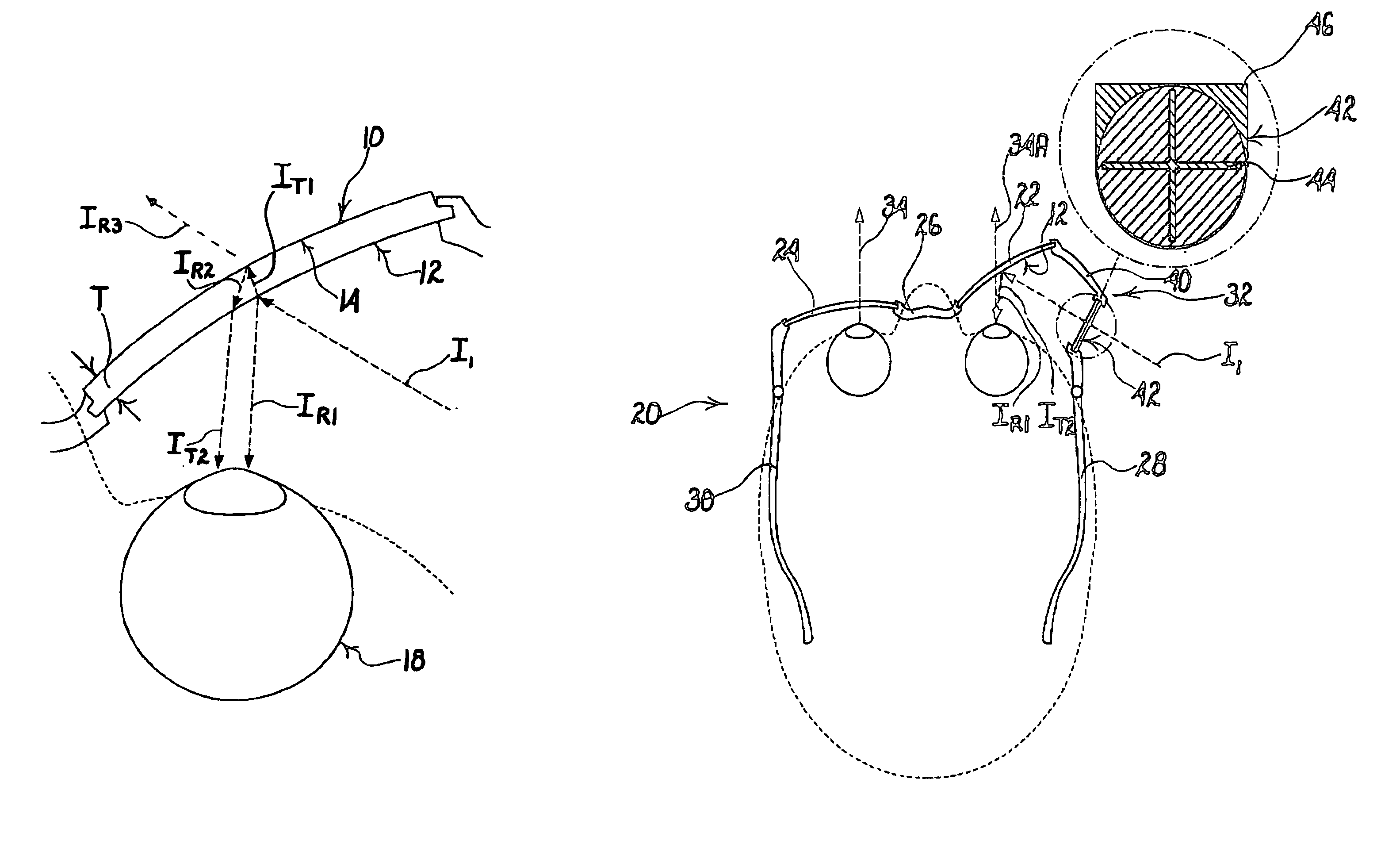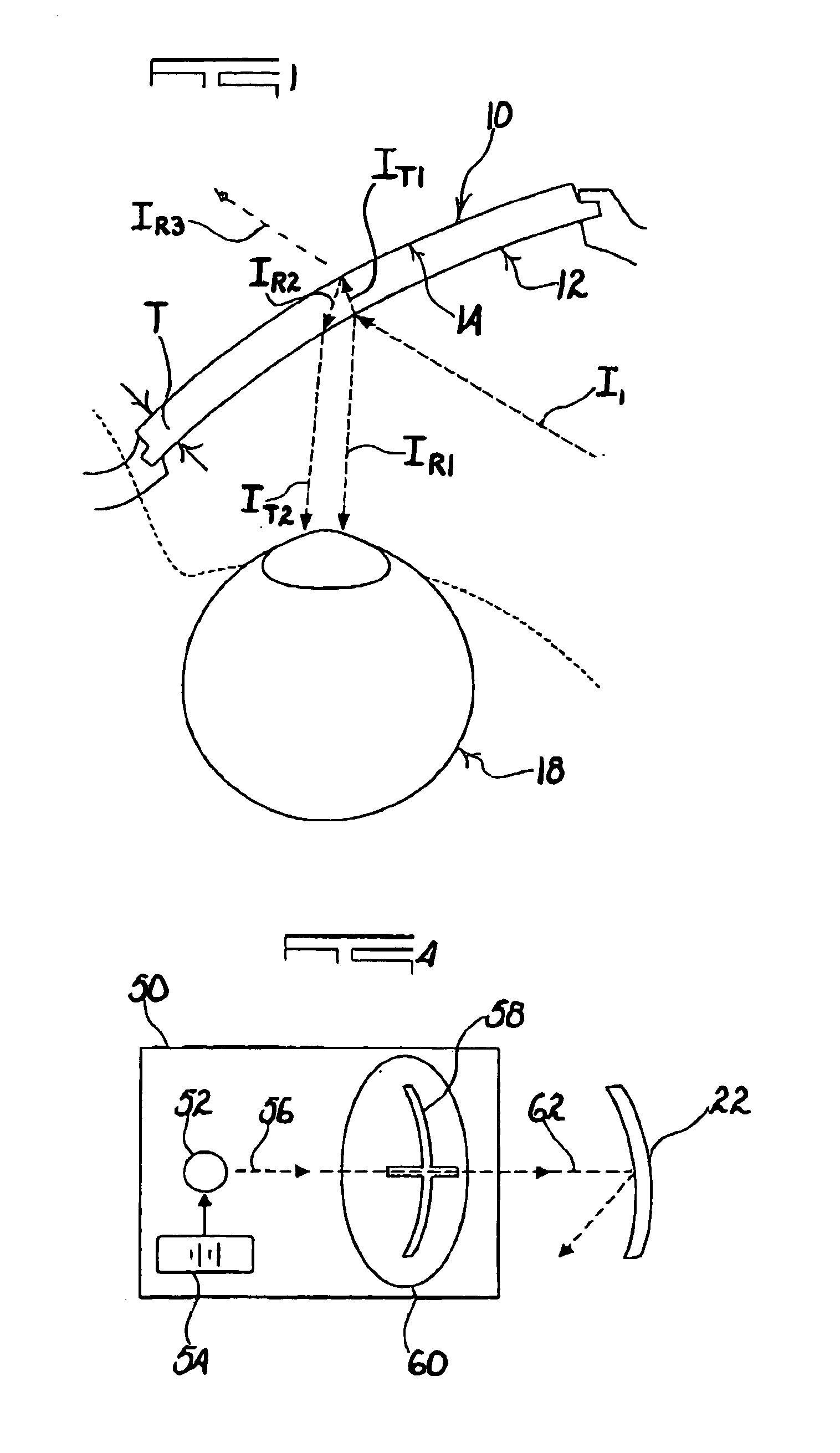Optical apparatus
a technology of optical equipment and lens, applied in the field of optical equipment, can solve the problems of high cost of application of this type of light coating, inability to meet the needs of users, and inability to meet the needs of users, and achieve the effect of reducing the ability of the lens to transmit light from the general field of vision to the eye, and being easy to s
- Summary
- Abstract
- Description
- Claims
- Application Information
AI Technical Summary
Benefits of technology
Problems solved by technology
Method used
Image
Examples
Embodiment Construction
[0029]FIG. 1 of the accompanying drawings illustrates in cross section a lens 10 used in the apparatus of the invention. The lens is made from a light transmissive material eg. glass or a plastic such as polycarbonate, and has an outer reflective surface 12 and an inner reflective surface 14. The lens material has an absorption index A and a reflective index n. The lens is of uniform thickness T, where T is preferably ≦2 mm.
[0030]FIG. 1 illustrates an incident light ray I1 impinging on the outer reflective surface 12. The ray produces a first reflected ray IR1 and a refracted ray IT1. When the latter ray strikes the inner reflective surface 14 a ray IR2 is reflected internally and this is refracted at the interface of the outer surface 12 with atmosphere to produce a ray IT2. At the interface of the inner surface with atmosphere an outgoing refracted ray IR3 is produced.
[0031]A person viewing the rays arising from the outer surface 12 will thus see, with an eye 18, a first, main ima...
PUM
 Login to View More
Login to View More Abstract
Description
Claims
Application Information
 Login to View More
Login to View More - R&D
- Intellectual Property
- Life Sciences
- Materials
- Tech Scout
- Unparalleled Data Quality
- Higher Quality Content
- 60% Fewer Hallucinations
Browse by: Latest US Patents, China's latest patents, Technical Efficacy Thesaurus, Application Domain, Technology Topic, Popular Technical Reports.
© 2025 PatSnap. All rights reserved.Legal|Privacy policy|Modern Slavery Act Transparency Statement|Sitemap|About US| Contact US: help@patsnap.com



